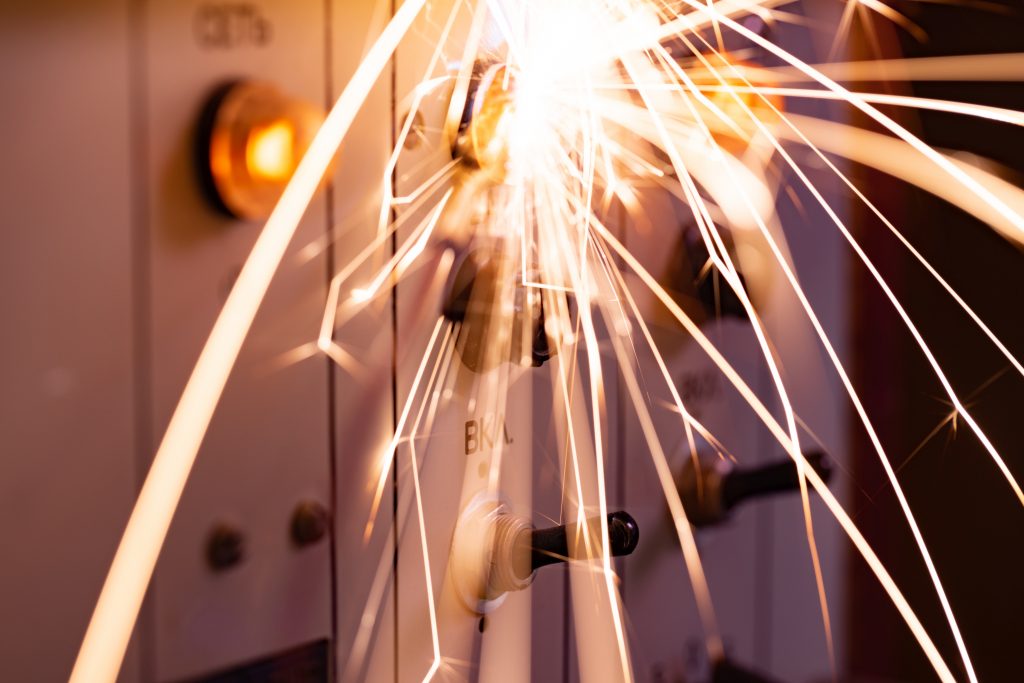If you own a generator, it is important to know what to do if the generator gets wet. Although you are not planning to risk the machine by letting it rain over your generator, sometimes things may get out of hand. Since manufacturers often talk about water-resistant generators, you must also have wondered Are generators waterproof? Generators are built to resist water up to some extent with a safe covering but are not waterproof. Therefore, you should not take it lightly if your generator gets wet from rain, snow, or water leakage.
What are the Dangers of a Wet Generator?

Electric generators should not be placed near water bodies or with too much moisture. The dangers caused by water in a generator may either be life-threatening electric shocks or damage caused to the components inside. Then can a generator get wet when not in use? This may appear less risky as there is no danger of electrocution. However, a wet generator can cause its components to rust and decay, causing damage to its function.
Electrocution
If the generator is wet, you should be very careful when getting close to the area around the generator since water is a good conductor of electricity. Although a few drops of water around the generator may not be harmful, having a lot of water as a continuous body would be risky. Touching a wet part on a generator that is exposed to electricity may cause electrocution. Therefore, it is crucial to keep your generators away from possible moisture and water.
Damage to its Components
Even if you don’t touch a wet generator, the internal components can get damaged due to moisture accumulated inside. If water gets inside the fuel tank, the fuel may be contaminated and result in the faulty function of the generator. The engine compartment is another component vulnerable to moisture. A malfunctioning engine could even result in unstable power generation, which could possibly damage the electrical and electronic devices connected to it.
What To Do If Generator Gets Wet
Although you take good care of your generator, what to do if generator gets wet? The answer for this may vary depending on whether the generator is just wet or totally flooded. If the generator is not submerged in water, you can try the following steps to dry the generator and restore its function. Do not start the generator when wet, as there could be wet wires resulting in short circuits that can damage the components.
Blow Hot Air
Blowing hot air is pretty much the easiest way to remove water and moisture from your generator. However, you need to be careful about the casings and other sensitive parts that could be harmed by the heat of the air. Do not use a heat gun as the plastic may melt. You can use a heater at a safe distance so that you can cover a wider area and the plastic parts will not melt. This will also prevent the generator from being damaged during operation.
Cold Air
Air circulation can help evaporate the water inside the generator. Turn a running fan towards the generator or use a clean leaf blower to dry the water or moisture inside. This method may be more favorable as there is no risk on components as in using hot air.
Load Drying
If you are sure that the wires and other electrical components are not wet, you can start up the generator. The engine will reach a high temperature within an hour, generating enough heat to evaporate the water. This can be used for many situations where the generator is wet due to rain or leaks. It is important to keep the generators dry as much as possible because wet generators can cause rusting in metal parts.
Compressed Air
You can also use compressed air to dry out the water inside your generator within a few minutes. This may not be a practical option since everyone does not have an air compressor. But if you are using an air compressor, it is recommended to wear safety goggles to prevent any damage to your eyes caused by water or particles moving at high speed. This is one of the best ways to dry your generator without using heat.
How Do You Fix A Water-Flooded Generator?
Sometimes the generator may be flooded and submerged in water due to rain or water leaks. In this case, cleaning and drying may not be easy since you have to remove large quantities of water. The following steps will help dry your generator and minimize damage to the components.
Dry the Generator
The first step is to put your generator in a place where it will not get wet anymore. Then remove the excess water and leave the machine to dry up for one or two days.
Disassemble the Generator
Then you need to disassemble each part of the generator carefully, including the electric boxes. Make sure to keep all the nuts and bolts in the right places so that you don’t misplace them. Refer to the Operations and Maintenance Manual of your generator to figure out the steps in dismantling the components.
Reseal all the Seals and Regrease
Once you make sure that everything is dry and clean, you can replace every seal securely. Don’t forget to grease any generator parts that should be turning well. Using the right type of grease on the electrical components is very important.
Reassemble
Reassembling the components after drying, resealing, and regreasing can be quite complicated. You need the guidance of the manual once again for this. You can even get the support of a technician or a friend to assist you in this task.
Replace Oil and Test the Generator
Drain the oil in your generator and replace it before you start the generator again. Fill the oil pan and test the generator by running it. Check whether it provides power, but do not run it completely when starting at first.
Despite these difficulties, there are times that you have to use the generator during adverse weather. Can portable generators get wet? Although generators should not get wet, you can easily find ways to run them safely. Find out How to Run a Generator in Rain so that you can minimize the damage caused to your generator from rain.
What are the Specific Parts to Check When Fixing a Wet Generator?
All components must be attentively fixed back after severe contact with water. Checking the engine and carburetor is also very important in addition to the following parts that need more attention.
Fuel Tank
If the tank got wet with fresh water, then simply empty the fuel tank and leave it to dry in the sun. If not, you can use a hot blower to dry out the water. If it is salt water, then dry it and oil it properly.
Spark Plug
The spark plug is a vulnerable component that may be easily damaged due to contact with water. You can check this by drying the plug and trying to switch on the generator. If the plug sparks, it is in good condition and if not, the spark plug needs replacement. This is one of the main reasons for generator got wet won’t start.
Air and Fuel Filters
Then you need to check the air and fuel filters. If your generator was soaked completely, then you need to replace both of these. This is because you cannot directly identify the condition of these filters as you did in the spark plug previously. So these filters may be damaged and lead to malfunction of the generator, causing harm in the long run.
Frequently Asked Questions

Can you run a wet generator?
You should avoid running a wet generator due to the possible dangers of electrocution and explosion. This could risk the lives of people nearby and even damage the generator permanently.
Can a generator get rained on?
Rain will not destroy a generator as long as the electrical components are not accumulated with water and moisture. However, it is recommended to keep the generators away from rain and snow to be on the safe side. You can cover them up using generator covers made for storing when not in use.
Where should a generator be placed in a storm?
It is not recommended to use portable generators during storms with strong wind. This is because trap covers won’t protect your generator well from these winds over 70mph. You can use the generator after the storm subsides at a safe distance from your home with abundant ventilation. Do not run the generator inside garages or porches as the toxic gases may cause carbon monoxide poisoning.
Conclusion
Since you are aware of what to do if your generator gets wet, you can run your generator safely without risking any lives or damaging the components. If your generator got wet and won’t start and you cannot seem to figure out the reason, you may need to get professional assistance from a technician. In addition to the damages caused by water, there are various threats to the electrical machinery of a generator, including electromagnetic pulses. Find out more about this by referring to Are Generators EMP Proof?
